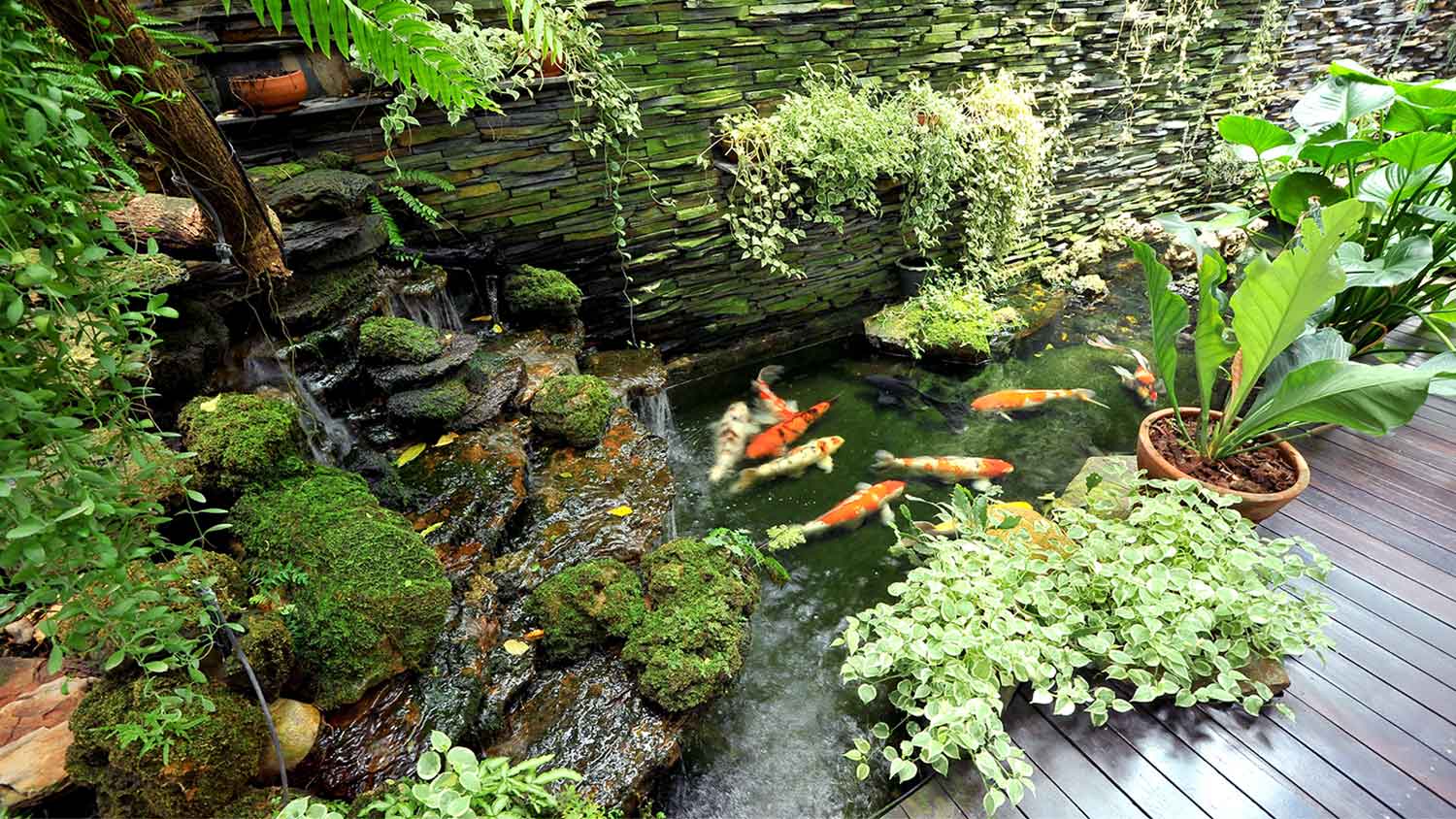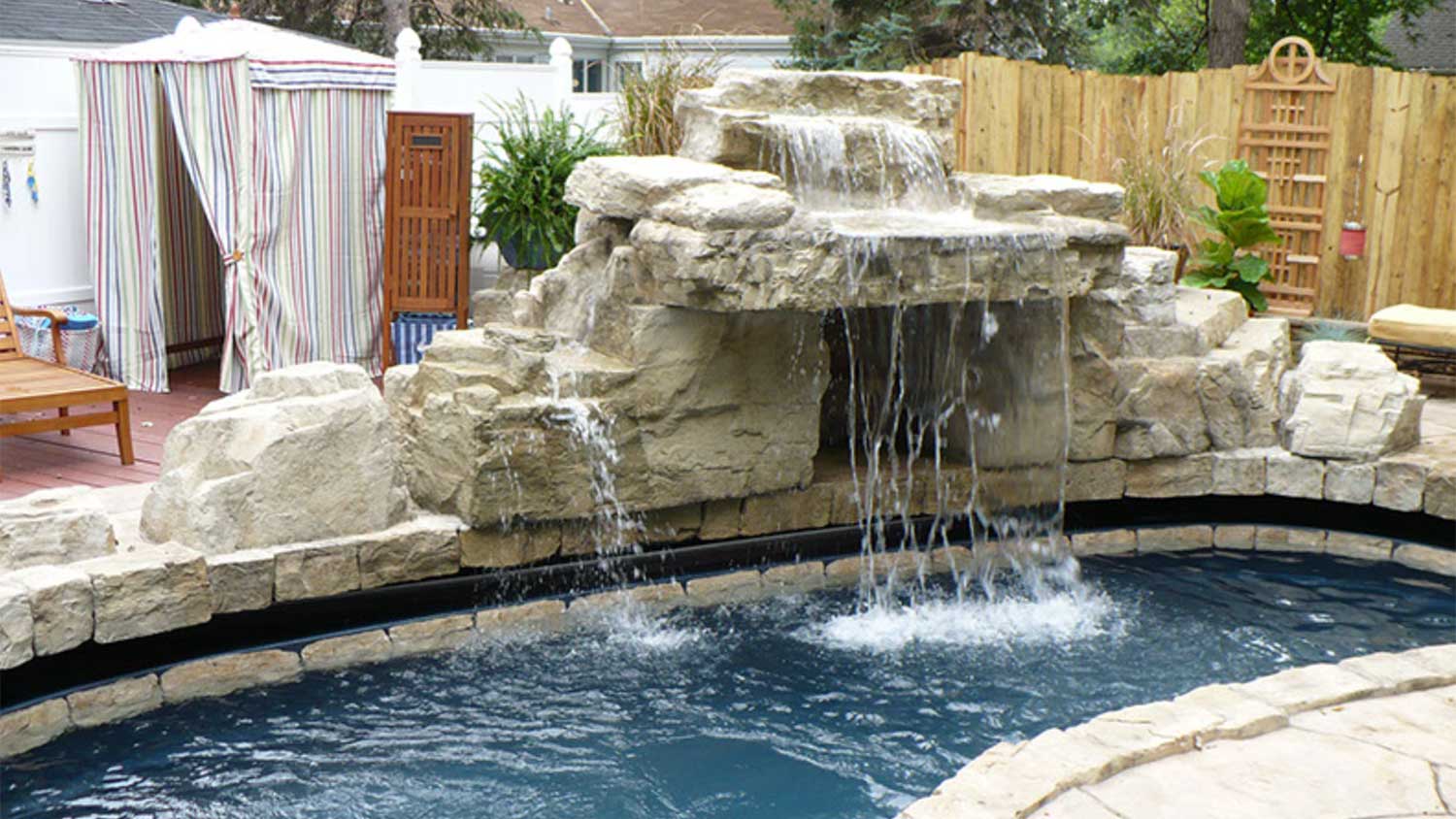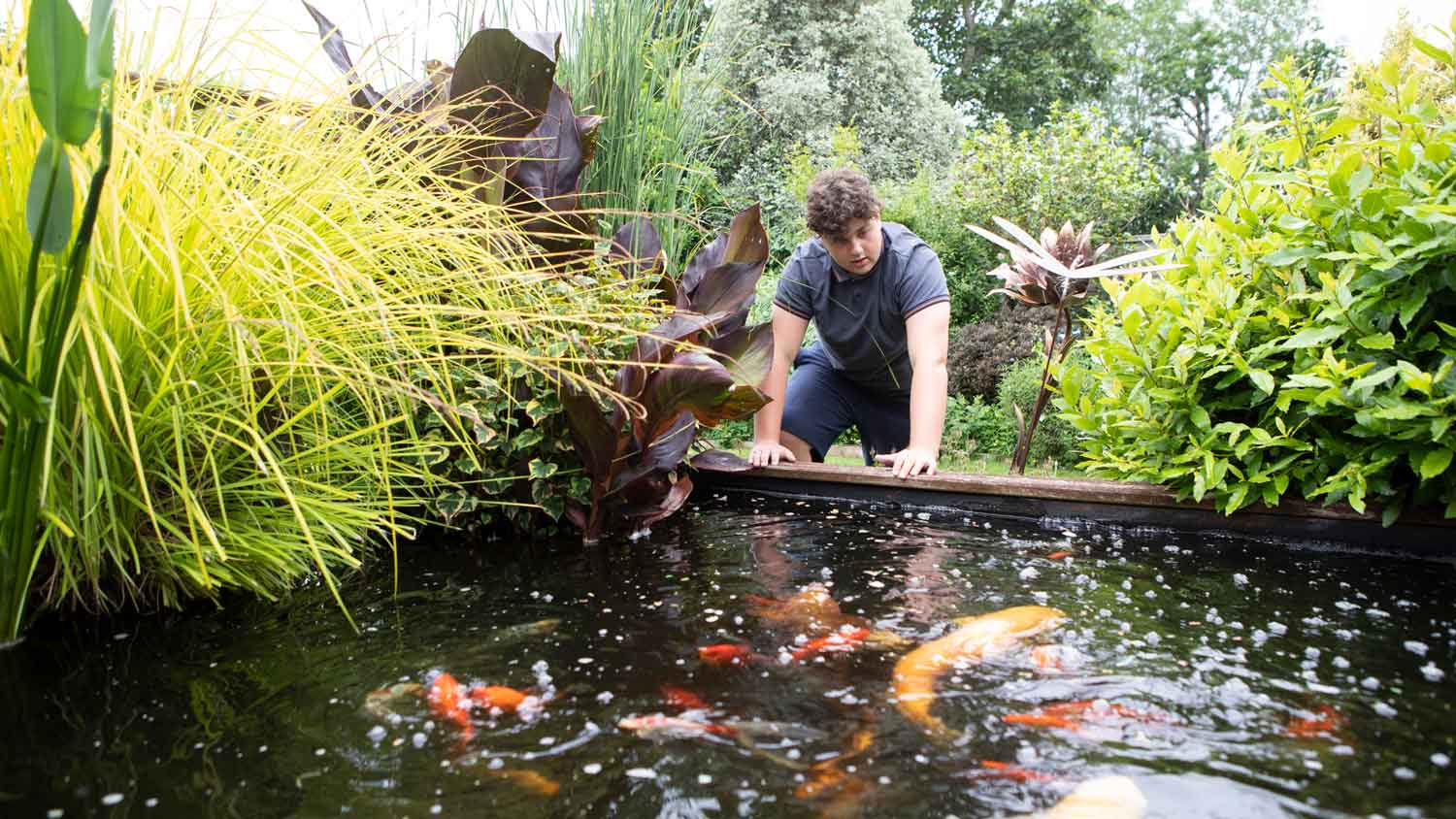
Wondering how much it costs to build a koi pond? Discover prices, cost factors, and tips to plan your dream backyard pond.
The cost to add a waterfall to a pool averages $9,000, with most homeowners spending between $4,000 and $20,000. Your price depends on the waterfall size, type, materials, and labor.


Adding a waterfall to your pool involves installing a water feature that enhances both visual appeal and the relaxing sound of moving water.
Waterfall size, type, and materials are the biggest drivers of total project cost, while labor, permits, and add-ons can increase your budget.
Investing in a pool waterfall can boost your home’s value and make your backyard more attractive to potential buyers.
Waterfalls create a unique, resort-like atmosphere and can improve enjoyment and comfort for your family.
Consider energy use, maintenance, and proper installation to ensure your waterfall remains a safe and lasting addition.
This article was created using automation technology and thoroughly fact-checked and edited by an Angi Editor in accordance with our AI policy.
The cost to add a waterfall to a pool averages $9,000, with most projects ranging from $4,000 to $20,000 depending on the size, type, and complexity of the feature. Smaller prefabricated kits may cost less, while custom rock waterfalls or elaborate designs can reach $30,000 or more. Costs are often quoted per project rather than per square foot.
A pool waterfall adds a striking focal point and soothing ambiance to your outdoor space. This guide will help you understand the key cost factors, options, and value considerations for installing a waterfall in your pool.
The size of your waterfall has a direct effect on the total project cost. Larger waterfalls require more materials, more powerful pumps, and increased labor hours. Small decorative waterfalls are budget-friendly and work well for compact pools, while medium-sized sheet or cascade falls provide a bolder look. Large features, such as multi-tiered waterfalls or grottos, bring dramatic impact but come with higher installation and operating costs.
Water flow rate and pump size must be matched to the waterfall’s height and width. A larger pool can support a bigger waterfall, but expanding an existing feature or adding a large structure to a small pool may require additional upgrades.
| Waterfall Size | Description | Average Cost |
|---|---|---|
| Small | Decorative accent, 1–2 feet high | $1,500–$4,000 |
| Medium | Sheet/cascade, 2–4 feet high | $4,000–$10,000 |
| Large | Multi-tiered/grotto, over 4 feet high | $10,000–$30,000 |
Choosing the right waterfall type shapes both your pool’s look and your installation costs. Common options include sheet falls (smooth, wide streams), rock waterfalls (naturalistic cascades), grottos (cave-like hideaways), spillways, rain curtains, and laminar jets (arcing streams). Each type brings unique benefits, installation challenges, and price points.
Sheet falls and spillways are often less expensive and easier to maintain. Rock waterfalls and grottos offer a natural, custom appearance but require more materials and skilled labor. Prefabricated kits are quicker to install and cost less than custom-built features, but they may offer fewer design options. It’s important to consider how the waterfall integrates with your existing pool and plumbing setup.
| Waterfall Type | Description | Average Cost | Pros | Cons |
|---|---|---|---|---|
| Sheet fall | Smooth, wide water flow | $2,000–$6,000 | Simple, modern look; easy maintenance | Less natural appearance |
| Rock waterfall | Stacked rocks, natural cascade | $5,000–$20,000 | Natural look; customizable | Higher maintenance and cost |
| Grotto | Cave-like, with hidden space | $10,000–$30,000 | Dramatic, unique, great for kids | Expensive, complex to install |
| Spillway | Narrow, controlled stream | $1,500–$5,000 | Subtle, good for small pools | Limited visual impact |
| Prefab kit | Factory-made, easy to install | $1,500–$6,000 | Lower cost, quick installation | Limited design options |
Where you live and the specifics of your property can greatly affect the cost of adding a waterfall to your pool. In areas with a higher cost of living, such as coastal cities or major metropolitan regions, labor and materials are more expensive. Urban locations may also have higher permit fees, while rural areas could see increased delivery charges and limited contractor availability.
Site-specific factors, such as a sloped backyard or difficult access, can increase labor time and equipment costs. In-ground pools are easier to retrofit with waterfalls than above-ground pools, which may have structural limitations.
Understanding what drives the total cost of adding a waterfall to a pool helps you plan your budget and make informed decisions. Several key factors come into play:
Labor is a significant portion of your total cost, often 30% to 50% of the project. Skilled professionals involved in the installation may include pool contractors, landscapers, plumbers, and electricians. Hourly rates range from $50 to $150 per hour, depending on region and expertise, with minimum service fees for smaller jobs.
Complex projects, such as custom rockwork or grottos, require additional labor hours and may demand specialized skills. Urban areas with high demand for skilled trades can see higher rates. If you’re bundling your waterfall with other pool upgrades, contractors may offer bundled pricing that reduces overall labor costs.
Permits are often required when altering your pool’s plumbing, electrical, or structure. Permit costs vary by municipality but range from $100 to $500. Some regions require inspections before and after installation, which may involve additional fees.
Failure to secure proper permits can result in fines or forced removal of the waterfall. The contractor often manages permits, but always confirm who is responsible before work begins.
Many homeowners choose to enhance their waterfalls with add-ons like LED lighting, integrated slides, grottos, fire features, or smart automation. Each feature increases both material and labor costs. Custom rockwork or elaborate landscaping can substantially increase project costs, especially if heavy equipment or specialized artisans are needed.
Other elements can influence your final project cost:
Project complexity: Multi-tiered waterfalls, custom designs, and seamless integration with your pool require more time and resources.
Accessibility: Limited access to equipment or materials can increase labor and delivery costs.
Site preparation: Excavation, demolition of existing features, and material delivery may be necessary.
Post-construction cleanup costs contribute to the final bill.
Design fees: Custom waterfall planning may require professional design services, which cost between $500 and $2,000.
Inspection costs: City or HOA requirements may include separate inspection fees.
Plumbing and electrical upgrades: Necessary for proper waterfall operation and safety.
Some homeowners consider a DIY approach to save on labor costs, but there are important considerations. DIY materials and rental equipment cost $1,000 to $6,000, depending on the size and type of waterfall. While you may save on labor, mistakes can lead to water leaks, electrical hazards, or code violations, resulting in higher costs or safety risks.
Projects involving complex plumbing, electrical work, or custom rock features are best left to professionals. DIY installation may void manufacturer warranties and can take significantly longer, sometimes several weekends instead of a week with a pro. Hiring a licensed water feature contractor near you ensures code compliance, safety, and lasting results.
| Approach | Total Cost | Pros | Cons |
|---|---|---|---|
| DIY | $1,000–$6,000 | Saves on labor; hands-on | High risk of mistakes; time-consuming |
| Pro | $2,500–$45,000 | Expertise; fast; warranty | Higher total cost, less DIY satisfaction |
If you already have a pool waterfall, you might wonder whether to repair or replace it. Common repair needs include fixing leaks, replacing pumps, or repairing rockwork. Pool repairs cost between $300 and $2,500, depending on the specific issue. If repairs exceed 50% of the cost of a new feature, or if the waterfall is outdated or severely damaged, replacement is often the better investment.
Warranty coverage can also guide your decision—if components are still covered, repairs are more cost-effective. If not, or if the design no longer fits your needs, replacement makes sense.
Adding a waterfall can enhance the beauty of your pool and increase your home’s appeal to potential buyers. Many real estate experts estimate the return on investment (ROI) for pool waterfalls to be 50% to 75%, although this varies by region and market trends. In desirable neighborhoods or resort-like settings, a well-designed waterfall can set your home apart.
Waterfalls can make your pool safer by deterring unwanted access to certain areas and can improve energy efficiency when paired with smart controls. While property taxes and insurance costs may increase, the added enjoyment and increased curb appeal often make this upgrade a worthwhile investment.
You can save money on your pool waterfall project by planning ahead and making smart choices. Here are some practical ways to cut costs without sacrificing quality:
Choose a prefabricated kit: Prefabricated waterfall kits are less expensive and easier to install than custom-built ones.
Limit custom features: Minimize custom rockwork, lighting, or automation to keep costs manageable.
Compare multiple contractor quotes: Get several bids and negotiate for the best value.
DIY site preparation: Handle simple demolition, cleanup, or landscaping tasks yourself to reduce labor hours.
Schedule your installation during the off-season: Install your waterfall in the fall or winter when contractors are less busy, which may help you secure a discount.
Home is the most important place on earth, which is why Angi has helped more than 150 million homeowners transform their houses into homes they adore. To help homeowners with their next project, Angi provides readers with the most accurate cost data and upholds strict editorial standards. We extensively research project costs to develop the pricing data you see, so you can make the best decisions for you and your home. We rely on reputable sources, including the U.S. Bureau of Labor Statistics, academic journals, market studies, and interviews with industry experts—all to ensure our prices reflect real-world projects.
Want to help us improve our cost data? Send us a recent project quote to [email protected]. Quotes and personal information will not be shared publicly.
From average costs to expert advice, get all the answers you need to get your job done.

Wondering how much it costs to build a koi pond? Discover prices, cost factors, and tips to plan your dream backyard pond.

Discover how much it costs to build a pond. Learn about average prices, cost factors, and tips to plan your backyard pond project with confidence.

You may need to fill in a backyard pond to reclaim your yard or to remove an eyesore. Learn how much it costs to remove a pond and what affects the price.

A backyard oasis could be just a few steps away. Get koi pond ideas to inspire your own backyard water landscaping and answers to commonly asked questions.

Discover how much it costs to stock a pond, including average prices, key cost factors, and tips to help homeowners plan their pond stocking project.

Regular outdoor fountain maintenance will keep your water feature looking and working great. Follow these tips to learn how.